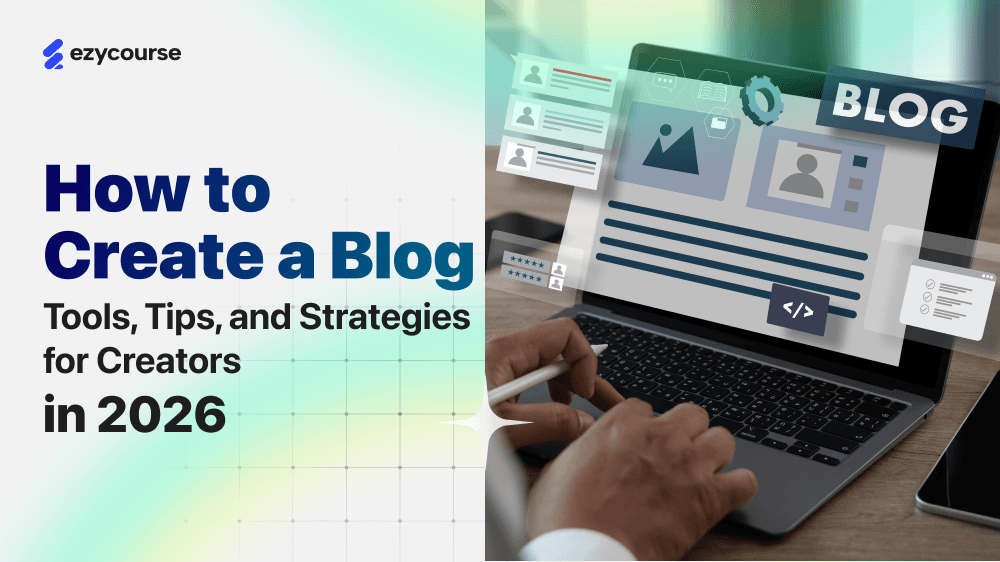You can’t imagine how much faster the education world is changing than ever before. And now, studying is undergoing one of the most rapid transformations in its history.
Nowadays, online learning tools are completely changing the way students and adults gain knowledge.
From video lectures and interactive exercises to automatic assessments and homework support, these tools are everywhere. But
How exactly do they make learning easier, faster, and more effective?
And how can you choose and use them to get the best results?
In this blog you’ll get all the answers that come to your mind.
👉Get Your 7 Different Types of Learning Styles
Benefits of Online Tools and the Transformation of Education

Online study tools bring flexibility and personalization to learning. Adaptive platforms are now available instead of the old way of teaching, which was "one teacher, one classroom." They adjust to the student's pace. Then, they provide instant feedback. Students can also return to the material as many times as they need. These features lower the barriers for learners with different learning speeds. They make it easier to review difficult topics.
The key advantages that users often highlight are as follows.
Instant access to materials: Learn at any time and from anywhere.
Personalization: Platforms recommend your next step based on previous answers.
Interactivity: This includes tasks with feedback, simulations, and visualizations.
Support for collaboration: Online chats, boards, and shared documents.
Simplified assessment: This refers to automatic tests and anti-plagiarism systems.
These advantages have a highly positive impact on student motivation and overall learning effectiveness.
Practical assistance in completing tasks
Are you having trouble creating formulas or visualizing data? Or not sure how to build a report correctly?
When working on practical data-related tasks, today’s students have more support and opportunities than ever. They can get help with technical topics, especially spreadsheets and data analysis in Microsoft Excel. For example, EduBirdie writers for hire specialize in providing focused assistance with Excel tasks, helping students grasp and apply key concepts more effectively.
Professional services allow students to get solutions for complex tasks that follow educational standards and are delivered on time. This makes learning more manageable and effective.
When support is part of the learning process instead of simply providing solutions, students not only solve the problem, but they also gain skills they can use later. Explanations usually have examples, comments, and advice to help people avoid making the same mistake again, which helps them do well in the long run.
Interactive platforms aren’t just fun. They’re proven to boost engagement, as we explained in our “How to Increase Student Engagement in Online Learning” guide.
Interactive Learning Platforms: Learn Faster & Smarter

Interactive platforms have completely changed the way students learn. In the past, children were mostly passive listeners, just sitting and watching. Now, they are actively engaged, participating in the learning process and interacting with the material.
Here are some notable tools that will help students learn faster and more effectively. These tools combine technology, analytics, and even gamification to make learning faster and more effective.
Adaptive learning. AI
Platforms use smart algorithms to analyze students’ answers and then suggest the next tasks based on their strengths and weaknesses. This means students don’t waste time on topics they already know. Instead, they can focus on areas that need more practice, which has been shown to improve learning outcomes.
Microlearning. Modular courses
Another helpful approach is microlearning. Courses are broken down into short, concentrated modules, allowing students to learn in small parts. This is perfect for busy people because it makes it easier to repeat lessons and apply knowledge to real-life situations.
If you are looking for powerful microlearning platforms in 2026, check this blog, where you will get the top 10 microlearning platforms.
Visualizations & Simulations
For technical subjects, visualizations and simulations play a big role. Interactive graphics and realistic examples let students experiment, make mistakes, and see the results immediately. This kind of hands-on learning is a powerful way to understand complex processes and relationships quickly.
Productivity and Learning Organization Tools

Modern learning is impossible to imagine without effective time and task management. Online productivity tools help:
Create structure in the learning process;
Reduce chaos;
Keep focusing on what matters most.
They make daily learning into a clearly planned and manageable process. And that you can track and measure.
Task Managers and Time Management
Do you know that digital planners, apps, and progress trackers help organize the learning process?
Yes, they act as an “external memory.” This way, they allow you to focus on studying the material rather than remembering deadlines.
This type of tool builds a habit of consistency. Also, they help maintain steady learning even during periods of high workload.
Cloud Documents and Collaboration
Shared spreadsheets, presentations, and notes make collaboration simple and efficient. Students can work together on projects in real time, track contributions, and receive instant feedback from teachers. Cloud services also store a history of changes, so you can always see the team’s progress and revert to previous versions when needed.
Automation of Routine Processes
You know that preparing materials can be repetitive and time-consuming. Automation tools such as templates, autofill, macros, and others can handle this busywork for you. It means preparing large tables in Excel or formatting long documents. You can focus on the content of your work.
Automation not only boosts efficiency. It also decreases the possibility of errors, resulting in accurate and professional-looking end results.
Learning Mobility

Today, you can see that most platforms have mobile apps. They allow you to study content on the go. You may learn during breaks at work or in short periods between classes. Podcasts, short movies, and interactive tasks are now on your phone.
So, you may stay in touch with the study content. It is essential for the development of long-term knowledge.
Micro-moments format
Mobile technologies have created a new approach to learning—so-called micro-moments. People use even a few minutes to master a small part of the material. These can be:
5-minute grammar exercises;
Short tests;
Watching explanatory videos.
This format is ideal for the modern pace of life. With it, you can turn any free moment into a learning opportunity.
Mobile applications are frequently synchronized with desktop counterparts. Users can begin learning at home on their PC and continue on their phone while on the go. As a result:
Adaptability increases.
The habit of constant learning develops.
Hybrid Approach: Online Teachers and Tutors
Online tutoring allows you to combine the benefits of human guidance and technological tools. Live sessions with a tutor can be combined with:
Homework exercises on the platform;
Automated testing;
Progress analytics.
This hybrid approach provides personal supervision and quick correction of mistakes. Therefore, it often yields better results.
Pros:
Flexible schedule;
Access to global experts;
Individualized learning.
Cons:
Risk of dependence on assistance;
Varying quality of services;
Need to choose a reliable provider.
How to Choose an Online Tool
Choosing the right tool is easier when you know what you need.
Define your goal.
For what exactly are you prepared? An exam, professional development, or a particular project?
Evaluate the format.
Do you require video lectures, interactive sessions, or live sessions with a teacher?
Review reviews and case studies.
Look for real examples of results.
Start with a trial period or a single module.
In this way, you may determine whether the interface and approach are suitable for you.
Just like subscription models let creators develop income streams, online tools help you build skills that employers value.
👉You can build your career skills online by following “15 Profitable Subscription-Based Website Ideas,” this guideline.
Ethical issues and risks
Online tools open up opportunities, but they also raise ethical questions. Services that do the work for the student can help in a crisis situation. However, systematic use of such services can make students too relaxed. That's why you should approach everything wisely. Check the quality of sources. Avoid plagiarism. Follow the rules of academic integrity.
The Future of Online Learning: What to Expect in the Next 5 Years

Online education has grown rapidly over the last decade. What was once seen as a secondary option is now a major part of learning. Technology keeps improving, and the next five years promise even more exciting changes.
Here are some possible trends to shape the future of online learning.
The Rise of Hybrid Learning Models
This combines online classes with in-person sessions and is becoming more popular. It gives students flexibility to learn virtually while still attending face-to-face classes when needed.
Artificial Intelligence and Personalized Learning
You can now see that a lot of online platforms employ AI to keep track of progress, find problems, and give personalized feedback.
Virtual and Augmented Reality (VR & AR)
VR and AR create immersive learning experiences. Medical students can practice surgeries, engineering students can design 3D models, and history students can explore ancient civilizations.
At the same time, important skills will remain unchanged:
Critical thinking;
Independence;
Ethical behavior.

Take Your Learning to the Next Level with EzyCourse

You’ll find many online learning platforms, but you have to choose one where you can do everything. From creating and selling courses and online teaching communities to building websites and email automation to bring back your students.
With the platform EzyCourse is an all-in-one place, which isn’t just another learning platform; it’s a complete toolkit for creators, learners, and educators. Whether you want to teach, learn, or grow your skills, EzyCourse gives you all the tools in one place.
Here’s what you can do:
1. Create and Sell Courses
Build online courses with video, audio, quizzes, and downloadable resources.
Share knowledge with your audience and monetize your expertise.
2. Coaching & Online Tutoring
Offer 1-on-1 coaching or group sessions.
Track student progress and provide guidance directly through the platform.
3. Community & Memberships
Build membership programs to engage learners and create recurring income.
Foster communities with discussion boards, live Q&A sessions, and member-only content.
4. Email Marketing & Automation
Send newsletters, course updates, and promotional campaigns easily.
Automate emails to stay connected with your students or audience.
5. Interactive & Engaging Tools
Quizzes, assignments, polls, and live webinars keep learners active.
Adaptive tools help students learn at their own pace and reinforce understanding.
6. Analytics & Progress Tracking
Track student performance, course completion rates, and engagement.
Make data-driven decisions to improve your courses and coaching sessions.
7. Mobile Learning & Micro-Moments
Learners can access courses anytime, anywhere, on any device.
Perfect for busy schedules or learning on the go.
8. Flexible Monetization Options
Sell courses individually, as bundles, or through subscription-based memberships.
Create recurring revenue streams with ease.
👉Get Started with 30-Day Free Trial with EzyCourse

Final Talk
Online tools have made learning easier, faster, and more accessible than ever. They let you personalize your study, stay organized, and tackle even the most challenging topics. But the real success comes from how you use these tools.
Think of them as a helpful companion, not a replacement for your own effort. Use them to support your learning, practice regularly, and build your skills step by step.
By choosing the right tools and being mindful of the help you receive, you can learn smarter, stay motivated, and enjoy long-term benefits from the digital transformation of education.





